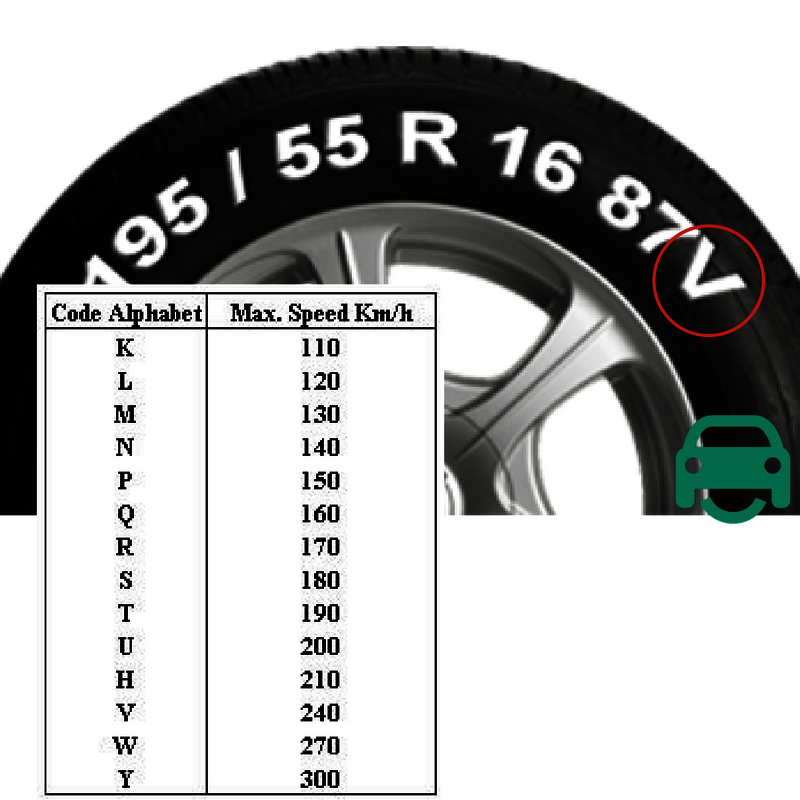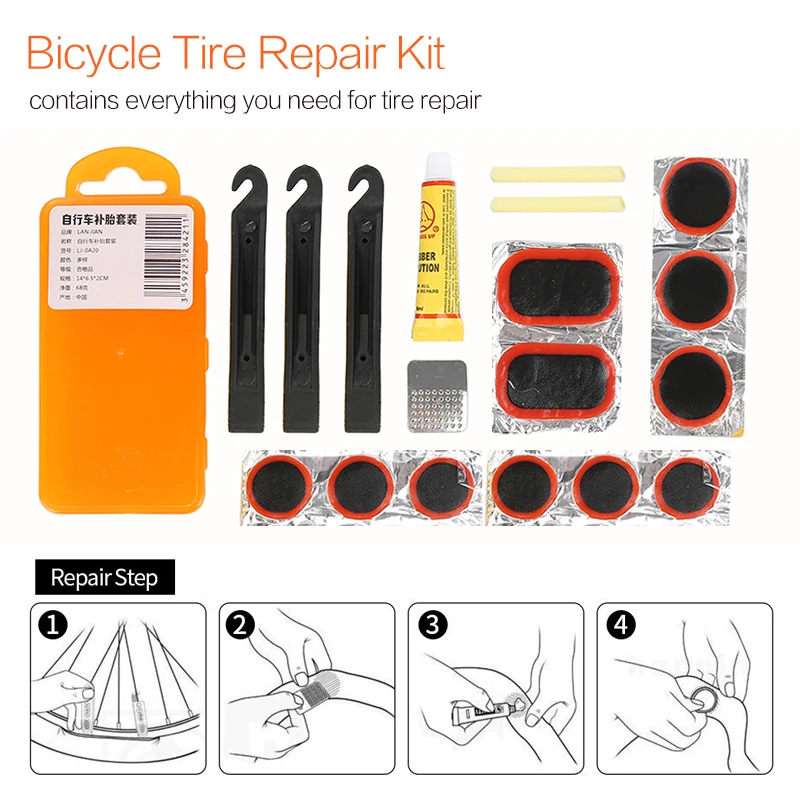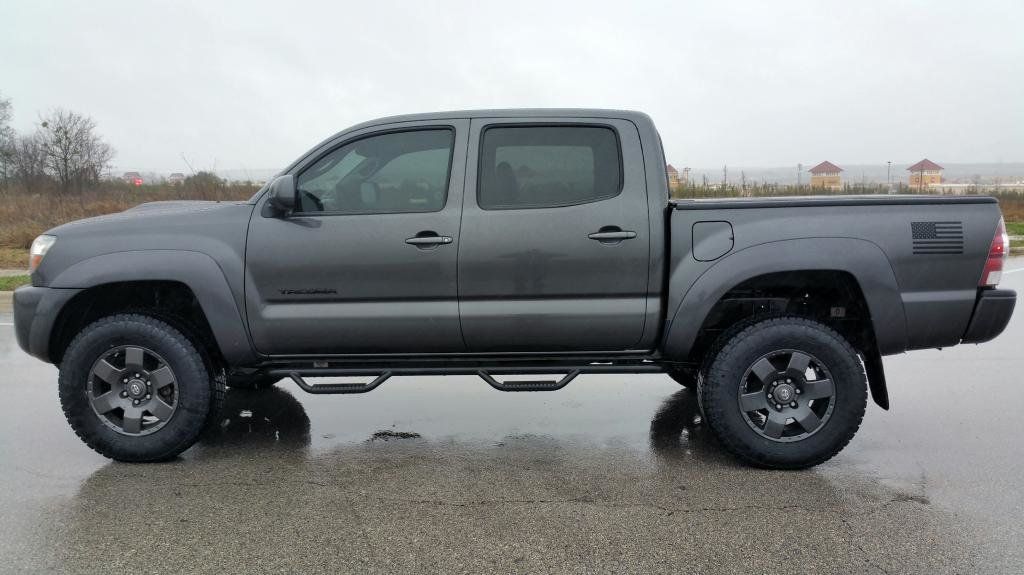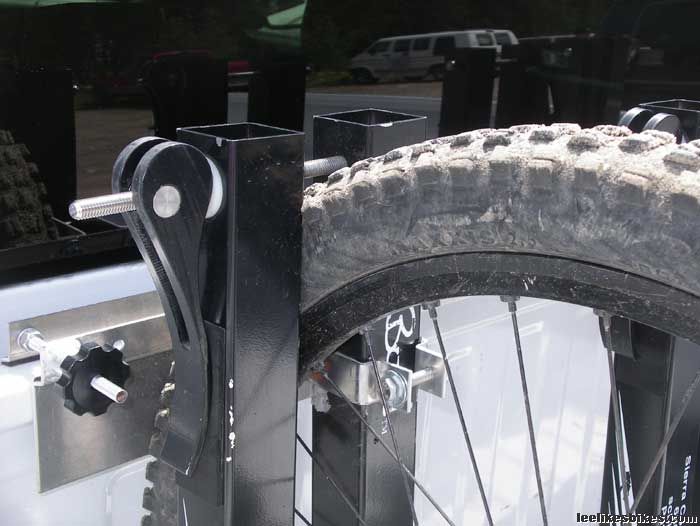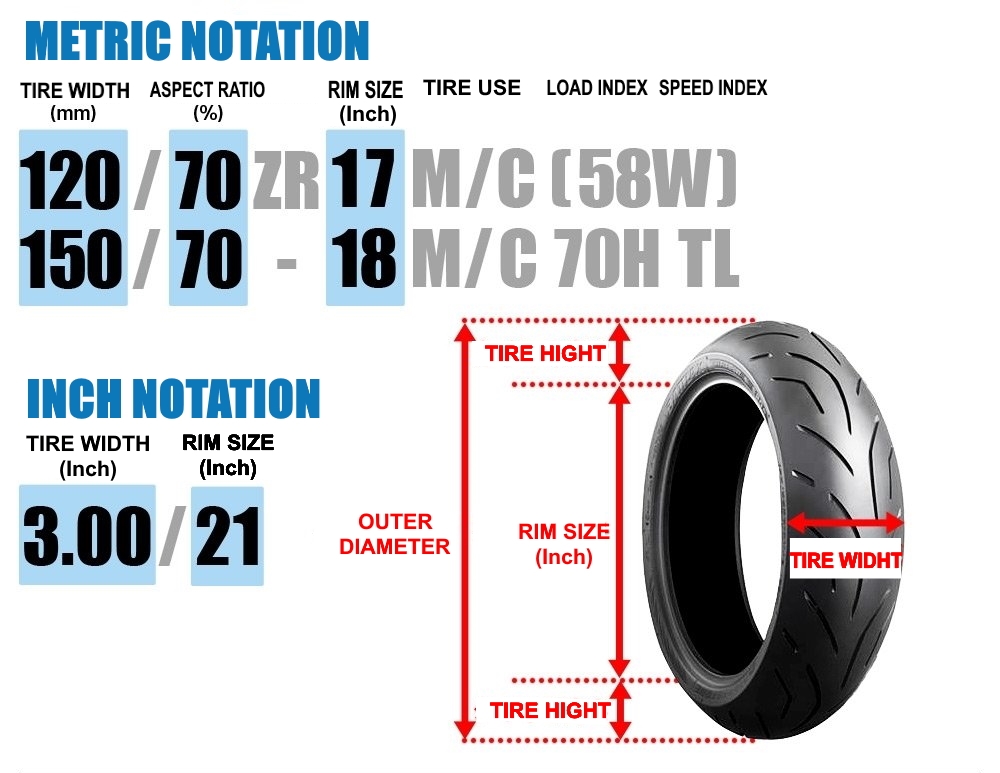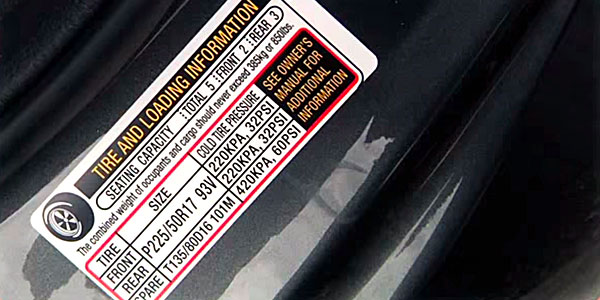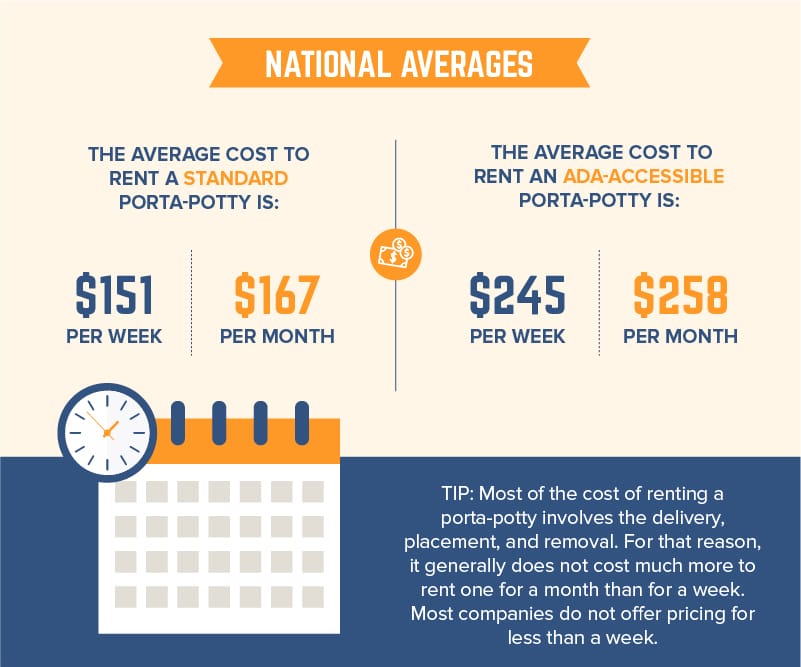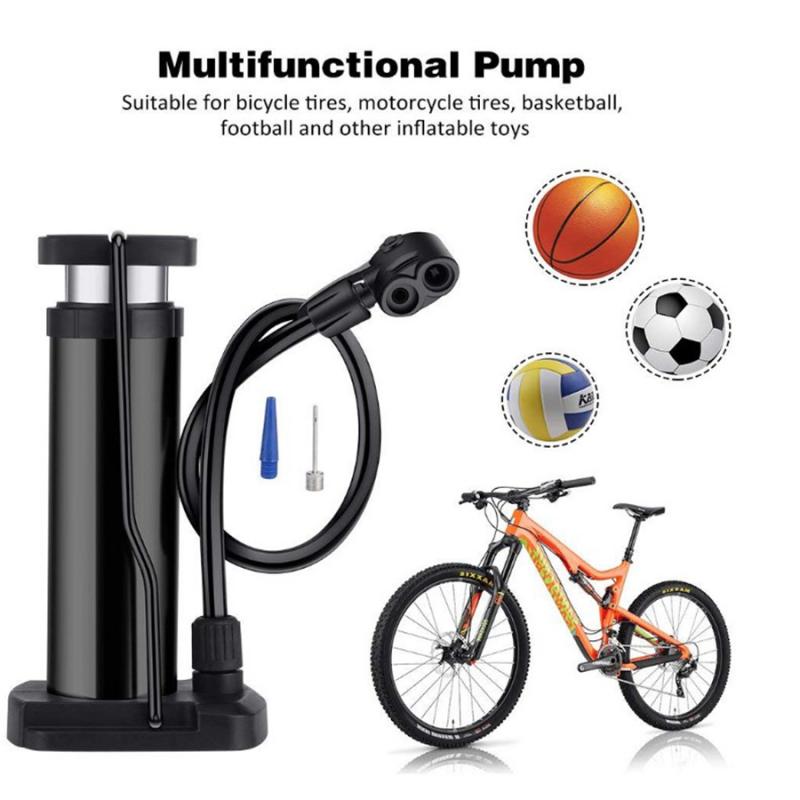February 2018
I have unlocked all the parts for car customising but does anyone know why some cars still have parts locked??
For example on the Chevrolet Pick up I can’t open tires, and on a number of other cars i can’t change the window tints.
Can anyone advise????
February 2018
@CARMENO_CUSTOMS
Here I looked up an answer for you...please watch the video.
https://www.youtube.com/watch?v=VZcEJXqON8w
Regards
BLVD69
February 2018
THAT REALLY DIDNT HELP. lol
As i expressed i have unlocked everything for customisation already but for some reason when i go into specific categories on certain cars nothing shows up.
I’ve customised over 50 cars with insane graphics, just want to know how i can get things like white wall tires etc..
February 2018
What I know, you can't change the window tint for ALL runner cars. (you can also not make it to super built in case of derelicted cars)
For original rims you can't change the size of the wheels. Is this maybe your problem?
February 2018 - last edited February 2018
@CARMENO_CUSTOMS
Ok, I went back and did some more searching for you.
Here is what I found for tires.
https://www.youtube.com/watch?v=ttWdx-_gMVQ
Here is another video also I found on unlocking tire customization.
https://www.youtube.com/watch?v=urpl35GIZPg
Here is a video that might also help your problems with fixing a glitch with this problem.
https://www.youtube.com/watch?v=k1sRgJPAavg
Hope this helps if not let me know..but watch the full videos.
it does no good to ignore them or fast forward through them.
I will keep helping if I can....take care!
Regards
BLVD69
February 2018
yes super builds are only possible for derelicts as i had to find out hard way lol.
as for alloys i understand but i’ve seen a munch of people online with white wall tires, but for what ever reason unknown to me they don’t seem to exist on my game 🤣🤣
February 2018
1) Wheels and Tires are two different things.
2) Tires are unlocked by achieving 2x score in freeroam. The videos BLVD69 posted show this.
3) What you are unlocking are tires with WHITE LETTERING.
4) You keep speaking of White Wall Tires..... AFAIK those are only available on the '32 Ford.
February 2018
Jabberwocky79 is correct , white walls are not on any car but the 32 ford. If you saw them on line id be interested in seeing the video , post a link please. As for the locked parts can you take a picture of the parts that are locked . This will show us what is locked specifically and what the message you get IS when trying to use the parts. If you see the lock symbol it will also tell you want you need to do in order to unlock that parts. Exhaust for example can be done by completing a certain amount of speed trap events i believe. Just finishing the story mode doesn't unlock everything. Follow what the games telling you to do in order to unlock the parts my friend .
February 2018
There is a glitch. You can use specific wheels/rims from other cars. I saw it on a youtube channel from the letsplayer (don't know his exact name) black panta or something like this.
I saw it on a youtube channel from the letsplayer (don't know his exact name) black panta or something like this.
February 2018
Easy lads,
understand i appreciate everyone’s input.
This is just one video i’ve found on youtube of a guy customising his truck and using white walls.
When i go on today il take screen shots of what i’m talking about i.e things been locked despite having completed everything and all challenges.
https://youtu.be/fzmmal9hzVQ
Need for Speed: Payback is the first game to be ruined by loot boxes. Obviously it’s not the first game to have loot boxes—we’ve been actively discussing them and their role in games for the last few months, thanks to Forza Motorsport 7 and Middle-earth: Shadow of War and “Is this gambling?” and so on.
But I’m talking ruined. In Need for Speed: Payback, we have a totally decent arcade racer undermined at every turn by rampant and predatory monetization. It should be a cautionary tale for the rest of the industry.
Coming out of E3, I thought I’d pinned down Payback. This was a return to the Fast and the Furious roots Need for Speed indulged in years ago, and Need for Speed’s long-awaited answer to the Forza Horizon series.
A much-needed answer, I might add. Forza Horizon was the upstart in 2012, the unknown quantity next to Need for Speed: Most Wanted. That was the last time the two were even close to parity though, as Forza Horizon’s grown to be probably the best arcade racing series since Burnout’s demise. Meanwhile, Need for Speed’s given us the mediocre (at least the PC port) Rivals and the baffling live-action
Need for Speed in 2016.
So at E3 Payback seemed like it was “borrowing” some of Horizon’s better ideas (some of which were likewise “borrowed” from earlier games) and I was fine with that. Horizon has “Barn Finds,” rusted out cars you can find in the open-world and bring back to your garage to restore. Well Payback has “Derelicts.” Horizon has extensive off-road areas? Yeah, Need for Speed can do that too. Payback is definitely Horizon inspired.
What I didn’t expect was for it to feel almost as much like Ubisoft’s pseudo-MMO racer The Crew. The bad parts of The Crew.
Gone is the previous Need for Speed’s focus on real-world racing with real-world cars modified by real-world parts. In Payback, cars are split into five largely arbitrary groupings of vehicles: Drag, Runner, Race, Drift, and Off-Road. I say “largely arbitrary” because most cars can be used with multiple kits, but only when you buy them for that kit. For example: I now own two Dodge Chargers, one ostensibly for drag racing and one for normal racing.
For example: I now own two Dodge Chargers, one ostensibly for drag racing and one for normal racing.
And one of which bears this sweet synthwave aesthetic.
That’s not great, right? But it gets so much worse. See, Payback has a Destiny-style random loot system.
Normal racing games work like this: You race cars, you earn money, you use that money to either buy better cars or upgrade your current vehicle with new parts—a more powerful engine, grippier tires, a lighter-weight frame, and so on. This is how Need for Speed has also worked for years now.
Not Payback! Payback ditches all of the under-the-hood tweaking entirely, replacing it instead with a totally incomprehensible “Speed Card” system. Each car has six Speed Card slots, which roughly equate to actual car parts—Block, ECU, Turbo, Exhaust, Gearbox, and Head.
IDG / Hayden DingmanEach race you’re rewarded with a random Speed Card to put in one of these slots. Say you do a street race in Silver Rock a.k.a. faux-Vegas. After winning, you’ll get a new Speed Card for your car, maybe bumping its “Block” rating from a completely arbitrary 3 to a still-arbitrary-except-it’s-slightly-higher 4.
Say you do a street race in Silver Rock a.k.a. faux-Vegas. After winning, you’ll get a new Speed Card for your car, maybe bumping its “Block” rating from a completely arbitrary 3 to a still-arbitrary-except-it’s-slightly-higher 4.
This is all then tallied up in ways that are again completely impenetrable to the player, and your car receives an overall rating. Lower-end cars have a rating of about 120. Fully-upgraded cars mostly top out at 300, with a handful of cars going up to 399.
As I said, it’s weirdly similar to The Crew. Except The Crew was a pseudo-MMORPG and Payback is decidedly not one. It’s just monetized like an MMORPG.
Every race in Payback has a “Recommended” rating attached, where “Recommended” means “If you’re more than 25 or 30 points lower than this, don’t even bother.” And how do you get more Speed Cards? Well, you have a few options a) Run old races again and hope something good drops. b) Buy cards from the Tune-Up Shop for absurd prices, cutting into the same money you’d rather use to buy actual cars. c) Trade in old cards for “Speed Tokens,” three of which can then be fed into a virtual slot machine (gambling upon gambling!) in the hopes it spits out a usable card. d) Get a bunch of Speed Tokens from loot boxes, and repeat Option C.
c) Trade in old cards for “Speed Tokens,” three of which can then be fed into a virtual slot machine (gambling upon gambling!) in the hopes it spits out a usable card. d) Get a bunch of Speed Tokens from loot boxes, and repeat Option C.
It’s gambling all the way down.
Oh, and did I mention Speed Cards can’t be shared between cars? Because they can’t. Even Speed Cards you aren’t using, ones that are just sitting in your inventory because you have better options available, are completely useless. You can sell them or trade them in for Tokens, but if you buy a new car it starts from scratch and you need to repeat any of the previous options to build up an entirely new set of Speed Cards.
In case you couldn’t guess where this is going, loot boxes are the most reliable option for upgrading your cars, if only because they’re full of Tokens, and Tokens are the easiest/quickest path towards building a competent car. And to its credit Payback does spit free loot boxes out at the player at a decent rate, maybe two or three per hour if you’re competent at arcade racers.
And to its credit Payback does spit free loot boxes out at the player at a decent rate, maybe two or three per hour if you’re competent at arcade racers.
But then you hit the grind. Around 10 hours in you’ll finish one round of races and a new set will unlock. In a normal racing game this would be exciting. In Payback, it’s the start of the end. The previous set of races, each of the five divisions tops out at a “Recommended” level of about 175 to 180 if I’m remembering correctly. Given the padding built into the system, this means you could feasibly finish that tier with your cars anywhere from about 155 up to 190. Most of you will probably finish closer to the lower end of that range.
IDG / Hayden Dingman IDG / Hayden DingmanYou unlock the next tier and instead of it starting at 180 like you’d expect, every race immediately “Recommends” a car of at least Level 210. Hope you have money or tokens lying around, otherwise you’re running old races ad nauseum and hoping something good drops or…buying loot boxes. And heaven forbid you bought a new car (or decided to use your newly-repaired derelict) instead of continuing to use that crappy Honda you got at the start of the game. If that’s the case, you’re not starting at 155—you’re potentially starting as low as 120. Again, all of your cards are locked to the car you earned them in. Not even the division! You can’t just unequip the cards from your last Drag car and move them to your new one. Nope! Nothing!
And heaven forbid you bought a new car (or decided to use your newly-repaired derelict) instead of continuing to use that crappy Honda you got at the start of the game. If that’s the case, you’re not starting at 155—you’re potentially starting as low as 120. Again, all of your cards are locked to the car you earned them in. Not even the division! You can’t just unequip the cards from your last Drag car and move them to your new one. Nope! Nothing!
It’s garbage. It’s the worst system I’ve ever seen in a singleplayer racing game, or any full-price singleplayer game.
And what sucks is that the underlying racing is actually pretty great. There’s no cockpit view which is bizarre, and rubber-banding is still as much an issue as it was in 2015’s Need for Speed, but the more varied landscape of faux-Vegas and the faux-Mojave Desert is ripe for stunts. Taking a mountain pass, effortlessly drifting around a hairpin turn, reaching the bottom and cutting across the sand to hit the next checkpoint, triggering your Nitrous boost and weaving between traffic—it gets my adrenaline up.
That’s why I say Payback is the first game completely ruined by loot boxes. It’s an otherwise-good racing game that is just wrecked by this stupid monetization scheme. What did it benefit Need for Speed to get rid of under-the-hood customization? What did it benefit Need for Speed to tie your car’s top speed, its braking power, and so on to a Collectible Card Game, then dole those cards out so painfully slowly that you’re forced to either pay up or waste your time running old races? And then to tie the cards you’re not using to a specific car?
There’s something like 100-plus vehicles in Payback. I saw eleven of them. After getting one car in each division, collecting the five derelicts, and buying a second Charger because I’m a sucker for Chargers, I just stopped caring. There was no way I was grinding enough Speed Cards to upgrade another vehicle. Hell, I wasted enough time just trying to get my core cars up to par and make it through the campaign.
It made me so mad I’ve now spent 1,400 words talking about Payback and have barely talked about anything except its stupid monetization dumpster fire. And that’s a shame, because there’s a ton to unpack. Payback is about as bizarre as it is generic, almost like you had a Machine Learning AI examine hundreds of racing film and game scripts, then spit out its own version.
Get this: The first person you betray in the game? He’s a man everyone just refers to as “The Gambler,” and he speaks exclusively in gambling metaphors. Later you’ll meet “Shift Lock,” the anarcho-communist group of drifters, run by a man named “The Underground Soldier.” Sample dialogue: “We are the last stand against corporate tyranny. We are the drifting freedom fighters of the misinformation age. We are…Shift Lock.”
Seriously. I quoted that verbatim.
IDG / Hayden DingmanThey’re using the weapons of the bourgeoisie against itself. Apparently.
Apparently.
And then there’s your generic “I want payback!” protagonist Tyler Morgan. My favorite thing about Tyler is he has random comments for everything. Sometimes if you’re driving when the sun sets he’ll yell out “Night time—this is when I come alive.” He also has a weird fixation on tunnels, and maybe half the time you drive through one he’ll say something like “It would be cool to race in a tunnel someday.” Spoiler: You do race in tunnels, pretty much constantly. Doesn’t matter, he’ll still say this up until you delete Need for Speed: Payback off your PC.
There are serious issues with the campaign—namely that it yanks control away from the player every time it does something vaguely cool. All the real action takes place in cutscenes, instead of letting the player attempt some amazing stunts.
But in any other racing game, that would be the greatest sin. Here, it’s an afterthought at the end.
You know what makes me so mad? I want to like Need for Speed: Payback. Go back and read my review of last year’s live-action Need for Speed. Sure, we gave it a 3/5, but you know what? That review was peppered with a lot of praise. It was by no means a good game, but it was fun. I think I called it a “guilty pleasure.”
Go back and read my review of last year’s live-action Need for Speed. Sure, we gave it a 3/5, but you know what? That review was peppered with a lot of praise. It was by no means a good game, but it was fun. I think I called it a “guilty pleasure.”
Payback is not fun. If this were 2015’s Need for Speed systems layered over the exact same story, this game gets a 3.5/5 rating, maybe even a 4 if I were feeling generous. Driving around the open-world is mindless fun. The story is sometimes bad-bad but more often falls into so-bad-it’s-great territory. And hey, the competition’s light this year—there’s no Forza Horizon to even compare against in 2017.
But Payback is the worst loot box implementation I’ve seen in a full-price game. So many decisions here seem made just to squeeze consumers for more money, and in the most obnoxious, tonally-inconsistent way possible.
It’s an absolute bummer. When I saw 2015’s Need for Speed at E3, Ghost Games seemed excited to bring the series back to its roots, to really emphasize how deep the customization went for an arcade racer, how much work they’d put into handling. I could be wrong, but I can’t imagine the developers went “Hey, you know what? Let’s ditch all that and clone the awful MMO loot grind from The Crew instead.”
I could be wrong, but I can’t imagine the developers went “Hey, you know what? Let’s ditch all that and clone the awful MMO loot grind from The Crew instead.”
One last, grim thought: I doubt Payback remains “the worst” for long. After all, I just branded Forza 7 with that same ignominious moniker literally last month. We’ve got a lot more dark before the dawn—if it ever comes.
Discussions about which is better, electric cars or cars with internal combustion engines have not subsided for several years, and with the release of each new model from well-known brands, they flare up again and again.
Perhaps, for everyone who is planning to purchase a new car, the same question arises, is it not time to seriously consider an electric car as an alternative. It is impossible not to notice that there are more and more offers, but how attractive they are, that is the question. In this article, I tried to answer the questions that I asked myself, I hope that the answers to them will be useful to you.
In this article, I tried to answer the questions that I asked myself, I hope that the answers to them will be useful to you.
With the need to buy a new car of my own, I faced more than a year ago, and quite unexpectedly. I was faced with the task of finding an alternative to a company car. At the same time, I did not want to lose comfort, and at the same time, my financial possibilities are not unlimited.
Based on personal experience of owning both Volvo and cars from the Big Three, the choice was made in favor of Volvo.
First of all, I propose to compare some general technical (official) characteristics:
Diesel only data not available, but based on various tests on Youtube, the hybrid consumption is at least one liter higher than D5.
When comparing, I used the same versions with the most similar overall configuration. The final price difference is almost 12,000 euros.
For further evaluation, imagine the following situation as close as possible to reality:0 days a year, 190*130=24700), most of which pass through a lightly loaded autobahn (which can significantly reduce consumption, less than 5 L of diesel per 100 km) 
Why Plug-In-Hybrid is not an alternative
190 working days per year * 90 = 17100 km
17100 km * 0. 054 l/1km = 923 L x 1.22 €/L = 1127 €
054 l/1km = 923 L x 1.22 €/L = 1127 €
17100 km * 0.064 l/1km = 1094 L x 1.22 €/L = 1335 € (208 € more per year)
3.36 € x 190 days = 638 € per year
Diesel Only: 1627 € per year (190 x 130 x 0.054 x 1.22)
Diesel Plug-In-Hybrid: 1973 € per year (1335 + 638)
Plus 346 € per year is our additional cost for Plug-In-Hybrid
 From this we can conclude that buyers do not see a special advantage in such a configuration. I don't know how it is with other manufacturers.
From this we can conclude that buyers do not see a special advantage in such a configuration. I don't know how it is with other manufacturers.
Based on the above, I can well argue that in my situation, the Plug-In-Hybrid thing is pointlessly expensive and absolutely not practical. I believe that this calculation will be suitable for many Plug-In-Hybrid manufacturers. Only for the price difference (+11880) one could buy 9738 (11880 / 1. 22) liters of diesel fuel and drive more than 180,000 km on it!
22) liters of diesel fuel and drive more than 180,000 km on it!
Modern Volvo models have abandoned diesel-electric in favor of petrol-electric. This configuration significantly increases the cost of ownership, as gasoline consumption, even according to official figures, is more than two liters higher than that of a diesel engine. The actual consumption is even higher, due to the greater weight of the car. In addition, petrol (in Germany) is about 0.15 euros more expensive than diesel.
Comparison of current Volvo models: VOLVO V60 PLUG-IN HYBRID T8 TWIN ENGINE AWD vs. T6 AWD
Admittedly, the cost difference has narrowed considerably. Improved indicators such as the size of the tank and trunk. But the charge is still only enough for 40 (officially 50) km, so this car is not designed for daily trips over long distances. The real consumption, according to the assurances of various YouTube bloggers, exceeds 10 liters / 100. For me personally, diesel was and still is the only alternative.
As an additional example, I offer a comparison of the BMW 330e PLUG-IN HYBRID with the BMW 320i. According to official figures, a full charge should be enough for 66 km, but in reality?
To begin with, the arguments listed below do not claim to be the ultimate truth, but only reflect the author's vision.
 And if many tenants want to buy an electric car, will the house's wiring hold up?
And if many tenants want to buy an electric car, will the house's wiring hold up?  How long will it take me to drive an electric car? For example, if you try to repeat the same on an Audi e-tron, you will get an average consumption of 46 kW/h at an average speed of 140 km/h and a full charge will last you approximately 175 km. So how long will you drive to Munich, and with the air conditioning on?
How long will it take me to drive an electric car? For example, if you try to repeat the same on an Audi e-tron, you will get an average consumption of 46 kW/h at an average speed of 140 km/h and a full charge will last you approximately 175 km. So how long will you drive to Munich, and with the air conditioning on? Probably an electric car or a Plug-In-Hybrid could be the best solution if you live in your home with solar panels and you only go to work in the city and you drive about 20-30 kilometers a day (the average road to work in Germany is 17 km , 2017 data). Many owners of electric vehicles proudly talk about how they save the world and make a tangible contribution to the conservation of nature. So maybe in this situation it is worth buying an e-bike or e-Scooter and making a feasible contribution not in words but in deeds.
If the conditions mentioned in the previous paragraph are met, then in theory an electric car has a lower cost of ownership. But everything depends on the duration and intensity of its operation. And why in theory, but because there is no long-term experience of operating an electric vehicle. (Not to compare them with a trolleybus).
But everything depends on the duration and intensity of its operation. And why in theory, but because there is no long-term experience of operating an electric vehicle. (Not to compare them with a trolleybus).
I think the electric car wins in the next two positions, but the other three points are rather controversial:
 .. 600 euros
.. 600 euros Since all of the above components are not in an electric vehicle, let its annual maintenance cost 100 euros per year. But perhaps electric car manufacturers will change the annual maintenance cycle to a two-year one. The cost of maintaining and repairing the undercarriage will not change as well as the cost of technical inspection every two years.
Currently, there are not enough full-fledged electric vehicles from the D segment. I think it would be incorrect to compare the Tesla Model S with the Audi A4, BMW 3-series or Mercedes C-class. The real situation on the market is such that there is no full-fledged family car on it. I have no doubt that sooner or later he will appear. But based on what we currently have, a full-size electric car “is a luxury, not a means of transportation.” Anyone who is willing to pay the amounts below clearly does not belong to the recipients of the average salary, and the cost of ownership for this category of buyers does not matter.
I think it would be incorrect to compare the Tesla Model S with the Audi A4, BMW 3-series or Mercedes C-class. The real situation on the market is such that there is no full-fledged family car on it. I have no doubt that sooner or later he will appear. But based on what we currently have, a full-size electric car “is a luxury, not a means of transportation.” Anyone who is willing to pay the amounts below clearly does not belong to the recipients of the average salary, and the cost of ownership for this category of buyers does not matter.
On this list, Mercedes deserves special praise for its humane pricing. In a very good configuration, it costs less than 85,000 €, while ego competitors can easily step over the hundred thousandth barrier. In a word, cars for everyone and for everyone! Do you believe that the buyers of these models are primarily guided by the interests of the environment?
By the way, why should electric cars be so much more expensive than petrol and diesel models?
 They use existing production facilities.
They use existing production facilities. Tesla's price includes many things that an established manufacturer doesn't have, from designing from scratch, to building a factory, sourcing staff, suppliers, and more. Do electric cars have to be that expensive?
I am very surprised that the so-called locomotive of the German economy, the automotive industry, is enthusiastically dreaming of a brilliant future, which promises them the "electrification" of the country's car fleet. Different forecasts are heard from all sides, all kinds of experts make different assumptions by what year (2025, 2030), what percentage of the German car fleet will become electric. Reminds auction, who will offer more. For example, the Volkswagen concern talks about 40% of electric vehicles (about 70 models) in its production by 2030. In 2018, more than 11 million vehicles were produced at the concern's factories. Curiously, this development is partly forced, as European legislators require a 37.5% reduction in CO2 emissions by 2030.
Different forecasts are heard from all sides, all kinds of experts make different assumptions by what year (2025, 2030), what percentage of the German car fleet will become electric. Reminds auction, who will offer more. For example, the Volkswagen concern talks about 40% of electric vehicles (about 70 models) in its production by 2030. In 2018, more than 11 million vehicles were produced at the concern's factories. Curiously, this development is partly forced, as European legislators require a 37.5% reduction in CO2 emissions by 2030.
Having visited almost all car museums in Europe, I could not help but admire the development and progress that brands such as Audi and Daimler achieved already in the 30s. At that time, cars of these brands were able to overcome the speed limit of 400 km / h. Perhaps I just love mechanics since childhood, but if we take an automatic transmission as an example, then modern gearboxes are an achievement in mechanics. I still look with admiration at 8/12/16 cylinder internal combustion engines. Also, ICEs sound…
Also, ICEs sound…
I cannot but agree that the efficiency of an internal combustion engine is significantly inferior to that of an electric motor. But the three-phase asynchronous motor does not cause me much emotion, just like the electric wheel created by Ferdinand Porsche in 1900!
But let's get back to thinking about the future. So, if indeed in ten years from 40 to 60% of the registered new cars in Germany will be electric cars, then we are talking about a number in excess of 2 million cars. This forecast implies a significant change in the entire structure of the automotive industry. It is very interesting to know what will be done by all those who today produce parts for the following systems (with the exception of aluminum casting):

Significant reductions in production will affect not only the direct manufacturers of the above components, but also their subcontractors, equipment manufacturers, etc. Of course, I understand that many factories will try to restructure production. But after all, the electric car has too few components to “employ” everyone. I do not think that those who produce exhaust pipes are re-profiled into electric motors. Without a doubt, everything will not happen in one day, but the changes will affect many in one way or another.
There is no history or tradition in the electric car industry. If, for example, Mercedes has been improving its car for more than 100 years, then this primarily concerned engine building. When buying a car, one of the main questions of the buyer is the question of the durability and reliability of the engine, box. Competing in the electric car market, the experience of creating 4, 6, 8, 12 or 16-cylinder diesel or gasoline engines and automatic transmissions for them does not give a competitive advantage. And Tesla proved it successfully.
And Tesla proved it successfully.
Then you can ask the question, why do I need a car from eminent brands with a rich history and tradition, if they have the same power plant? The design of the exterior and interior is a matter of taste, the computer stuffing is most likely made in the same factories, what remains?
Do you need a branded electric car "Made in Germany" or an electric car from China good Enough? I still found the time when computers differed in white and yellow assemblies. Maybe in 10 years, Chinese brands will flood the European market at very affordable prices? And what will happen then to the pride of the German car industry?
It is worth mentioning that the need for repair shops and service center personnel will also decrease significantly.
Since in recent years I have been using exclusively diesel cars, this topic affects me personally. If the entire population switches to electric cars, then the purity of the air in the city centers will certainly increase. But are diesels the root cause? In my opinion, this is just a consequence, and the reason is the huge number of offices and other administrative buildings located in city centers. Maybe it is worth building office buildings in the suburbs, closer to major interchanges, with convenient parking lots (with plenty of electric car chargers)? In my opinion, it is unfair that city dwellers should suffer because of firms that wanted to have an office with a view of, say, the Cologne Cathedral.
Recently, voices have been heard more and more loudly in defense of the ecology of countries with the largest reserves of lithium. Environmentalists argue about the potential threats to the industrial development of lithium. I don't think you can convince the government of a poor country to give up mining in favor of the environment. But I would like to hope that natural resources will be used wisely. Let's imagine that for starters, large automakers will be allowed to seize the bait harder by offering the export of raw materials at affordable prices. And when the entire chain from mining to the production of batteries is established, then it is possible to raise prices, once in a while ... Or demand the deployment of full-cycle enterprises in their countries, from mining to the production of the final product. And to protect common interests, you can create an OLEC, or a South American OLEC. I wonder how much an electric car will cost?
Environmentalists argue about the potential threats to the industrial development of lithium. I don't think you can convince the government of a poor country to give up mining in favor of the environment. But I would like to hope that natural resources will be used wisely. Let's imagine that for starters, large automakers will be allowed to seize the bait harder by offering the export of raw materials at affordable prices. And when the entire chain from mining to the production of batteries is established, then it is possible to raise prices, once in a while ... Or demand the deployment of full-cycle enterprises in their countries, from mining to the production of the final product. And to protect common interests, you can create an OLEC, or a South American OLEC. I wonder how much an electric car will cost?
By the way, why in Germany is it always and everywhere necessary to talk about Norway as a mandatory role model? It is certainly wonderful what is happening in Norway: tax on the purchase of a conventional car and no tax on the purchase of electric vehicles, no VAT (25%), reduced road tax, free use of ferries and toll roads. Until recently, Oslo also had free charging (well, parking). From April 2019charging costs about 1 euro per hour during the day and about 0.50 euro at night.
Until recently, Oslo also had free charging (well, parking). From April 2019charging costs about 1 euro per hour during the day and about 0.50 euro at night.
And now a few words about this country (I haven't been there yet). Norway is one of the largest gas exporters and a major oil exporter in the world. Due to its favorable natural location, 98% of the electricity in the country is produced from hydroelectric power plants. The sale of oil and gas accounts for 56% of the country's total exports. Maybe this example is not the best, but I believe that a drug dealer does not sell drugs to his family members. So, by selling gas and oil to the Europeans, the Norwegians are subsidizing their electric vehicles. By the way, why is Norway not part of a large "family of European peoples"? They probably do not want to participate in "European solidarity" and distribute part of their gas income among the "needy" from southern and eastern Europe. The average income level in Norway in 2018 was 67,416 euros, allowing it to take an honorable fifth place, while Germany is located at 19th. th, with an average income of 38,683 euros.
th, with an average income of 38,683 euros.
So maybe, based on the above, it is not worth taking as an example a country with a population of 5.3 million inhabitants, almost a third of whom live in the “big Oslo”, as an example to follow?
Let's go back to Germany. Owners of electric cars (not hybrids) don't pay road tax, but have I noticed that electric cars hover above the ground? In my humble opinion, it is not entirely correct to encourage some and punish others in this way. Different types of transport move along the roads, and the owners of some do not have to pay for others. How long will these tax breaks last?
And how long will the state subsidize the development of electric vehicles? Forever? Does anyone really think that halving the tax on the use of electric vehicles (including Plug-In-Hybrid) as company cars will bring real steps in terms of improving the environment?
In the absolute majority, a company car is used for fairly long distances. The mileage of company cars is simply huge (at least in IT-Consulting). So what's the point of a Plug-In-Hybrid if the car drives the rest of the distance on gasoline and probably not in Eco-mode. I even know what my next car would be, a BMW 330e PLUG-IN HYBRID. I would only have to buy (or rent) myself
The mileage of company cars is simply huge (at least in IT-Consulting). So what's the point of a Plug-In-Hybrid if the car drives the rest of the distance on gasoline and probably not in Eco-mode. I even know what my next car would be, a BMW 330e PLUG-IN HYBRID. I would only have to buy (or rent) myself
car roof rack, but few people care about increasing the consumption of a company car. Don't be under the illusion that subsidizing utility plug-in-hybrids can improve air quality in cities.
It is probably no secret to anyone that the main reason for the hype caused by electric vehicles is environmental protection, namely the reduction of CO2 emissions into the atmosphere.
The opinions of both fans of electric vehicles and their critics agree on only one thing: while driving, an electric car does not emit harmful substances into the atmosphere.
The following two, but no less important points, are more than debatable:
The first point is pretty simple, the higher the share of renewable energy, the cleaner the ride. If you live in a solar-powered home and the energy you produce is sufficient for all your needs, then you can be congratulated for your personal contribution to protecting the environment. Another, simpler way, suitable for everyone and for everyone, is the purchase of so-called eco-energy. I hope that the energy companies do not deceive customers.
If you live in a solar-powered home and the energy you produce is sufficient for all your needs, then you can be congratulated for your personal contribution to protecting the environment. Another, simpler way, suitable for everyone and for everyone, is the purchase of so-called eco-energy. I hope that the energy companies do not deceive customers.
In the second paragraph, we are given the task of calculating how much CO2 was emitted during the production of a battery for an electric car. As for me, it is not easy to answer this question, we need comprehensive information on mining, production and the entire logistics cycle. I offer my modest and very superficial assessment.
We need the following components to produce the battery:
It is necessary to take into account the fact that the extraction of all the above components is harmful to the environment.
By the way, one can only envy China. The country has almost all the components for the full cycle of battery production: from the extraction and processing of minerals to the production of the final product. And look, many car manufacturers will remain only in museums.
It should be mentioned that the production of electric motors requires a significant amount of copper, the production of which also pollutes the environment.
When comparing, it is necessary to take into account not only how many tons of carbon dioxide are emitted into the atmosphere during the production of one ton of diesel fuel or gasoline, but to evaluate the entire cycle (production, tanker or pipe from Russia, delivery to a refinery, processing, transportation to a gas station) .
Also remember that the produced raw materials must be transported from one part of the globe to another, reloaded into wagons or cars and diluted for further processing. For transportation between continents, sea transport is used, on which more “dirty” diesel engines are installed. Similar engines are also used by oil tankers.
The aquarium can be described as an attempt to create a biotope in a small enclosed space, minimizing the influence of external stimuli on it. To replace "dirty" cars with "clean" ones in individual cities, and there is an attempt to create a biotope. But you have to look at reality objectively. If it is possible, first of all, with the help of prohibitive measures to force the owners of "dirty" cars to get rid of them, then "dirty" cars will go to countries where there is no opportunity to create their own "urban biotopes". And German cars, which have become much cheaper, will move to Eastern Europe or Africa, and there they will already raise the level of CO2 in the atmosphere.
When I read the comments under various articles about electric cars, I get the impression that many owners of electric cars have turned into cultists, sincerely convinced that they are saving the world by buying an electric car. While turning a blind eye to the fact that a sharp increase in mining is causing irreparable harm to the environment in many regions of the world.
In Germany in 2018, 36,062 passenger electric vehicles and 31,442 Plug-In-Hybrids (other hybrid forms are about 100,000 more) were sold, while 3,253,830 ICE vehicles were sold. If by 2030 the share of electric vehicles sold in Germany is 40%, i.e. more than a million, then the amount of necessary resources will increase significantly. And they will not be mined and processed in Germany. I am sure that in no Western European country it would be possible to obtain permission for something like this: picture 1 picture 2
In conclusion, I would like to remind all those who are looking forward to a bright electric mobility future with enthusiasm, planet Earth is our biotope .
P.S. Thank you for reading to the end! I will be glad to comments and constructive criticism.
